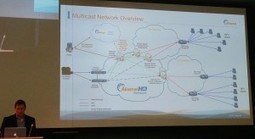Four years ago, we wrote about YouTube’s early support for the HTML5 <video> tag and how it performed compared to Flash. At the time, there were limitations that held it back from becoming our preferred platform for video delivery. Most critically, HTML5 lacked support for Adaptive Bitrate (ABR) that lets us show you more videos with less buffering.
Over the last four years, we’ve worked with browser vendors and the broader community to close those gaps, and now, YouTube uses HTML5 <video> by default in Chrome, IE 11, Safari 8 and in beta versions of Firefox.
Research and publish the best content.
Get Started for FREE
Sign up with Facebook Sign up with X
I don't have a Facebook or a X account
Already have an account: Login
Monitoring innovations in post-production, head-end, streaming, OTT, second-screen, UHDTV, multiscreen strategies & tools
Curated by
Nicolas Weil
 Your new post is loading... Your new post is loading...
 Your new post is loading... Your new post is loading...
|
|






















